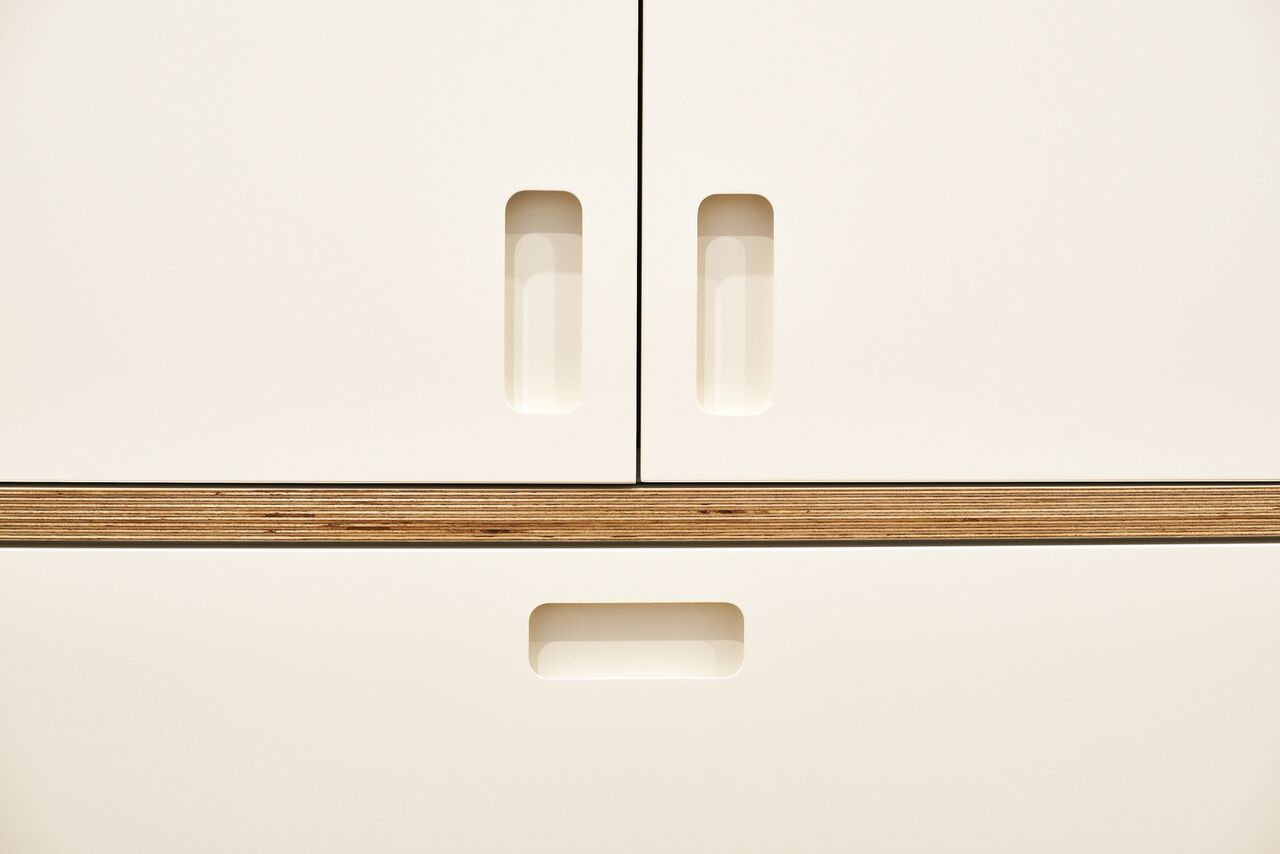01—04—2021
The Exposed Edge in Plywood Design: Here’s What You Need to Know
Recently, the exposed edges of plywood have been featured in more and more interior designs – and the trend is gaining traction. There’s even Pinterest pages devoted to showing off the look!
While once it was usual to cover the edges for a neater, more uniform finish, the natural and eye-catching aesthetics of the exposed edges is fast becoming the preferred option for designers looking for something that goes above and beyond the everyday.
So, if you’re in the midst of designing a project, the question is, will you expose the plywood edges and what do you need to know about exposed edges? Read on to learn all you need to know about exposed plywood edges in design.
Adds visual interest and character
In the plywood manufacturing process, glue and heat are used to compress and bond many thin sheets of wood together to make each plywood panel. This gives the edges a layered look, with an attractive pattern that includes the black lines of the glue. The natural and honest material that ply is complements the exposed edge, resulting in a finish that is visually appealing.
Where is exposed edge ply used?
Common places we are seeing exposed edges include shelving and furniture, in particular desks and tables, as well as kitchen and bathroom cabinetry. The use of exposed edges is often subtle and is used to create visual interest and complement natural tones without being over the top.
Some examples of exposed plywood edge can be seen in our completed projects, including:
Don’t forget the finish!
While the use of exposed edges is in part to highlight the raw and natural look of the layered wood, it’s important that the exposed edges are coated to protect the timber and prolong its life. We suggest sealing all edges with a hard wax oil coating as it provides an attractive finish which can be cleaned or repaired easily. It is also made from natural products that are produced using an eco-friendly manufacturing process which makes it a good choice for the environment too.
Exposed edge plywood products
We use the edge grain of ply to create a range of popular plywood products including Maxi Edge, Maxi Line and Maxi Deco. The exposed edge creates an added natural tone to many design possibilities.
Exposed edges can elevate your design
In interior design, it’s the small and subtle design features like exposed edges that add a sense of class that takes the space to another level.
Exposed edges add contrast and visual interest to designs in a range of situations – from a residential home to a large public space. So, if you’re looking to add some visual identity to your next project, exposed plywood edges might be it.
Have a question about exposed edges or anything else ply related? We’d love to help! Get in touch with our team today!

01—04—2021
Recently, the exposed edges of plywood have been featured in more and more interior designs – and the trend is gaining traction. There’s even Pinterest pages devoted to showing off the look!
While once it was usual to cover the edges for a neater, more uniform finish, the natural and eye-catching aesthetics of the exposed edges is fast becoming the preferred option for designers looking for something that goes above and beyond the everyday.
So, if you’re in the midst of designing a project, the question is, will you expose the plywood edges and what do you need to know about exposed edges? Read on to learn all you need to know about exposed plywood edges in design.
Adds visual interest and character
In the plywood manufacturing process, glue and heat are used to compress and bond many thin sheets of wood together to make each plywood panel. This gives the edges a layered look, with an attractive pattern that includes the black lines of the glue. The natural and honest material that ply is complements the exposed edge, resulting in a finish that is visually appealing.
Where is exposed edge ply used?
Common places we are seeing exposed edges include shelving and furniture, in particular desks and tables, as well as kitchen and bathroom cabinetry. The use of exposed edges is often subtle and is used to create visual interest and complement natural tones without being over the top.
Some examples of exposed plywood edge can be seen in our completed projects, including:
Don’t forget the finish!
While the use of exposed edges is in part to highlight the raw and natural look of the layered wood, it’s important that the exposed edges are coated to protect the timber and prolong its life. We suggest sealing all edges with a hard wax oil coating as it provides an attractive finish which can be cleaned or repaired easily. It is also made from natural products that are produced using an eco-friendly manufacturing process which makes it a good choice for the environment too.
Exposed edge plywood products
We use the edge grain of ply to create a range of popular plywood products including Maxi Edge, Maxi Line and Maxi Deco. The exposed edge creates an added natural tone to many design possibilities.
Exposed edges can elevate your design
In interior design, it’s the small and subtle design features like exposed edges that add a sense of class that takes the space to another level.
Exposed edges add contrast and visual interest to designs in a range of situations – from a residential home to a large public space. So, if you’re looking to add some visual identity to your next project, exposed plywood edges might be it.
Have a question about exposed edges or anything else ply related? We’d love to help! Get in touch with our team today!






